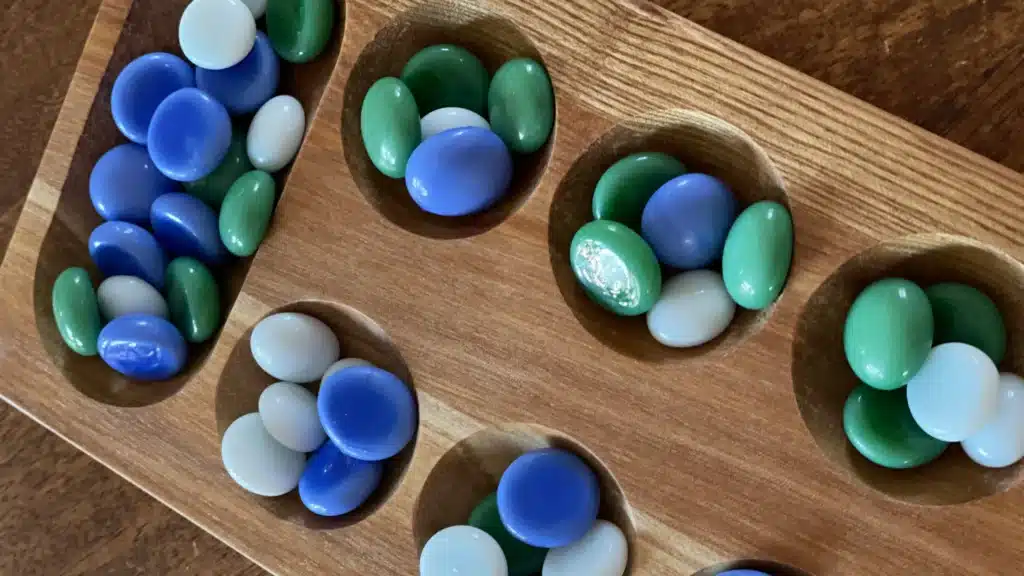Mancala is one of the oldest known board games, with a history spanning thousands of years across various cultures. It’s a game of strategy, skill, and calculation that is simple to learn but challenging to master. Originating in Africa, Mancala has evolved into numerous variations played worldwide. In this guide, we’ll delve into the basic rules, strategies, and tips to help you become a proficient Mancala player.
Understanding the Game
Mancala is typically played on a board consisting of two rows of six pits, or holes, and two larger pits, called “stores,” at either end. Each player controls the six pits closest to them, while the stores are used to accumulate captured stones. The game is played with 48 stones, typically small pebbles or seeds.
Setup
- Place the board lengthwise between the two players, with the stores at each end.
- Distribute four stones into each of the 12 smaller pits.
- Players sit opposite each other, with their respective rows of pits in front of them.
Objective
The objective of Mancala is to capture more stones than your opponent. Players take turns picking up stones from one of their pits and distributing them counterclockwise, dropping one stone in each consecutive pit, including their store but excluding their opponent’s store.
Basic Rules
- Sowing: On your turn, choose one of your pits with stones and pick up all the stones from that pit. Then, distribute the stones one by one into each consecutive pit, moving counterclockwise.
- Capturing: If the last stone you drop lands in your store, you get a free turn. If the last stone lands in an empty pit on your side, you capture that stone and any stones in the pit directly opposite (your opponent’s pit) and place them in your store. Captured stones contribute to your final score.
- Ending a Game: The game ends when all the pits on one player’s side are empty. The remaining stones on the opponent’s side are then captured by that player and placed in their store. The player with the most stones in their store wins.
Key Strategies
- Sow Strategically: Plan your moves carefully to maximize your chances of capturing stones. Look for opportunities to create multiple captures in a single turn by ending in an empty pit on your side.
- Control the Center: The pits in the center of the board are crucial as they offer more options for future moves. Try to maintain control over these pits while disrupting your opponent’s plans.
- Counting: Keep track of the number of stones in each pit, both yours and your opponent’s. This will help you anticipate their moves and plan your strategy accordingly.
- Forcing Moves: Aim to force your opponent into disadvantageous positions where they have limited options for their next move. This can be achieved by strategically distributing your stones to block their potential moves.
Advanced Techniques
- Opening Moves: Experienced players often have preferred opening moves that set the tone for the game. Experiment with different opening strategies to see which works best for your style of play.
- Endgame Tactics: As the game progresses and fewer stones remain, focus on securing your lead by controlling the remaining stones and preventing your opponent from making significant captures.
Mancala is a timeless game that combines strategy, tactics, and foresight. Whether you’re a casual player looking for a fun pastime or a competitive enthusiast seeking mastery, understanding the rules and implementing effective strategies is essential. With practice and patience, you can hone your skills and enjoy the rich complexities of this ancient board game. So gather your stones, set up your board, and embark on the journey to becoming a Mancala champion!






